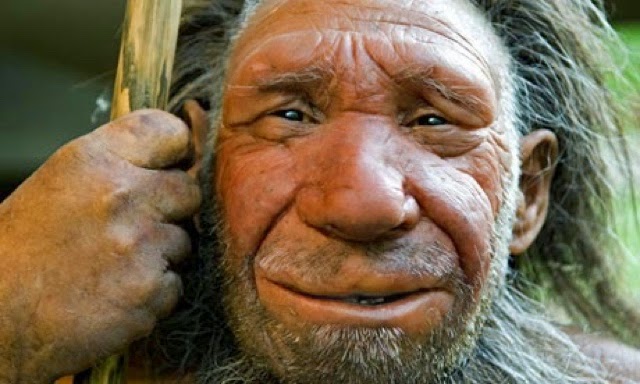The paper itself discusses the finding of a fragment of skull in a northern Israeli cave in western Galilee named Manot. The skull was dated at 54.7 kya plus or minus 5 kya using uranium-thoriam methods. The overall shape was unequvocally identified as anatomically modern humans. Lastly, this fragment represents the only fragment to date that can be colocated temporally and geographically with neanderthal specimens (neanderthals have been found as close as 24 miles from the Manot caves). That is it; that is all of the information in the paper that has been used to suggest that this piece of skull is evidence that we first mated with neanderthals in modern-day Israel approximately 55 kya - is that enough for you?
To give credit to the journal article, they do not declare so brasenly that their specimen identifies where anatomically modern humans interbred with neanderthals, rather, that it represents the current best guess. This is based on evidence from previous studies of the morphology of the skull (suggesting the general location or Europe) and genetic data that propose that it happened in a restricted area geographically about 50,000 - 60,000 years ago. In the context of these studies, finding a skull fragment in this location may seem reasonable evidence, but if we poke a little at the story is it a house of cards?
All this shows right now is that there were humans present and certainly not a thing about there behaviours. The limits of paleoanthopology technique, unfortunately, do not extend to describing with whom this particular individual interacted, their gender, or with whom he/she slept. Many such questions do not have definite answers that can be gleaned from small skull fragments, however, many of them can be addressed with genetic sequencing. Sadly, though, no such analyses have been done on this specimen. Without such genetic analyses it is not possible with great certainty to establish where this individual fits into the modern human family, let alone whether he/she mated with neanderthals and where in line they where.
All in all, the way this research was reported was a vast overexageration of what the paper reported, and unfortunately, the paper reads rather a lot like they are overexagerating what is a very nice finding. What should have been said is that a speciman, plausibly identified as human, was discovered at a geographic and temporal location that we believe would have been shared with neanderthals, which helps us better describe our migration out of Africa - no sex needed! Although that doesn't sound as compelling!


No comments:
Post a Comment